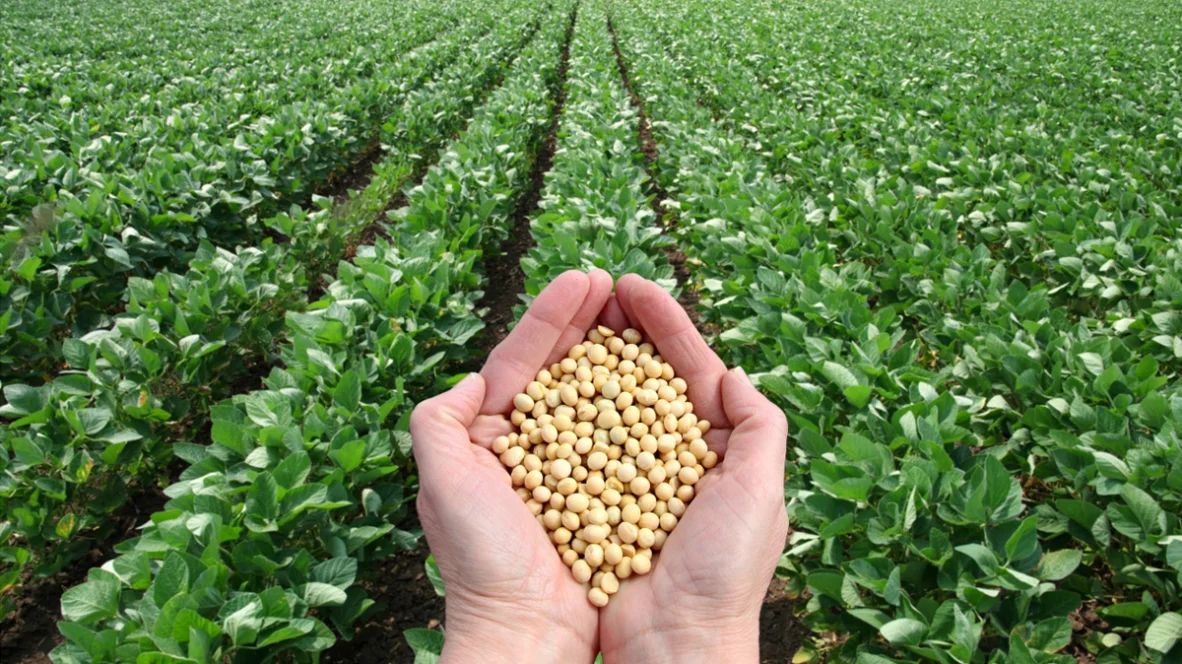Solvent extractors, representatives of the poultry industry, and other potential buyers of soybeans from around the world, including Pakistan, gathered in San Francisco last week. They attended Soy Connext, an event designed to connect buyers with soybean farmers from the United States.
The event comes amidst a bumper crop in the US. Farmers expect to produce 4.6 billion bushels of soybeans for the 2024/25 crop. According to the United States Department of Agriculture (USDA), supply estimates have increased by 11% over last year. As a result, US soybean prices are expected to be relatively low this year. This situation creates an interesting opportunity for buyers, particularly in the Global South. South Asia has a high demand for quality oilseeds, as they play a crucial role in both the edible oil and poultry industries.
U.S. Soybean Export Council
The U.S. Soybean Export Council (USSEC) organized the event. It hosted representatives from 62 countries in San Francisco. The attendees included representatives from Pakistan, Bangladesh, India, Nepal, China, Egypt, Indonesia, Japan, and Mexico. The attendees represented a range of markets from mature to emerging.
A number of prominent players from Pakistan’s solvent extraction and poultry feed industries were also present at the event. Mian Muhammad Ahmed, the CEO of Ali Daniyal Industries and Chairman of the All Pakistan Solvent Extractors Association, represented Pakistan. He was joined by Mian Shakil Ashfaq of Shujabad Agro Industries, Muneeb Monnoo of the Olympia Group, Nabi Bukhs of MA Oils and Sind Feeds, and Sikander Ali Khan of SS Oil Mills.
“It’s truly a humbling experience to bring so many key customers from around the world together to meet with U.S. exporters and expand their understanding of the value U.S. Soy offers,” said USSEC Chair Lance Rezac, a soybean farmer from Onaga, Kansas. “Compared to recent years, the price is right for buyers to benefit from U.S. Soy’s many advantages.”
Significant imports
Pakistan is a significant importer of oilseeds, which are a basic caloric component for most people. Producers crush oilseeds like soybeans to extract edible oil. They use the leftover material from this process to make “meals” for poultry feed in Pakistan. According to a State Bank Report from 2021, Pakistan’s total imports of oilseeds, including palm oil in various forms, were rising. These imports had exceeded $4 billion.
A number of issues have plagued Pakistan’s import market recently. In December 2022, authorities held around $300 million worth of soybean (including some imported from the US), at Port Qasim due to concerns over the product’s GMO status.
The poultry sector’s slow recovery and sluggish demand for edible oils led to no significant growth in Pakistan’s total oilseed use for 2022-23, according to a report from the Foreign Agricultural Service of the US Department of Agriculture (USDA).
Experts estimate usage at 6.4 million tonnes, a 3% increase from last year. Producers use most oilseeds for crushing, including rapeseed and sunflower seed for oil production. Crushing to produce meals drives soybean demand and the poultry industry is the primary user.
A good time to buy
While sellers market soybeans as a commodity oilseed, research continues to demonstrate that US soybeans are a premium product that enhances operational efficiencies for livestock farms, feed mills, and oil crushers.
“It’s truly a humbling experience to bring so many key customers from around the world together to meet with U.S. exporters and expand their understanding of the value U.S. Soy offers,” said USSEC Chair Lance Rezac, a soybean farmer from Onaga, Kansas. “Compared to recent years, the price is right for buyers to benefit from U.S. Soy’s many advantages.”
“We’ve all heard the phrase ‘knowledge is power,’” said Jim Sutter, USSEC CEO. “At Soy Connext, we’re unveiling some of the newest data we have available.
“We’ve long known that U.S. Soy offers a superior nutritional package, but we’ve not been able to quantify it in a way that’s meaningful to buyers. Today, we’re demonstrating that it’s possible, based on our modelling, that livestock farms using 100% U.S. soybeans in their feed formulations can unlock $3 million in profits.”
In a press release, the USSEC said their modeling is based on a broiler operation producing 50 million chickens annually. Sutter added, “USSEC’s technical experts around the world are meeting with customers to help them understand the differences between U.S. Soy and soy of other origins and the effect those differences can have on feed conversion ratios — a huge economic impact over the course of a year.”
This news is sourced from Pakistan Today and is intended for informational purposes only.






